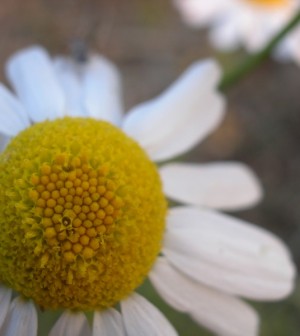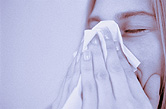- Skip Storing This Everyday Product in the Fridge Door
- Green Tea + B3 Pairing May Boost Brain Health
- Navigating Your Midlife Crisis: Embracing New Possibilities
- City Raccoons Showing Signs of Domestication
- Mapping the Exposome: Science Broadens Focus to Environmental Disease Triggers
- One Week Less on Social Media Linked to Better Mental Health
- Your Brain Changes in Stages as You Age, Study Finds
- Some Suicide Victims Show No Typical Warning Signs, Study Finds
- ByHeart Formula Faces Lawsuits After Babies Sickened With Botulism
- Switch to Vegan Diet Could Cut Your Greenhouse Gas Emissions in Half
Winter’s Polar Vortex Ushers in Spring’s ‘Pollen Vortex’


You may have survived the worst this winter’s polar vortex had to throw at you, but if you suffer from allergies, better brace yourself for its sibling — the “pollen vortex.”
Allergy experts say that the long, cold winter kept trees dormant for longer than usual, which means tree pollen season will overlap with grass pollen and mold seasons this year. And, for those with multiple environmental allergies, that likely means extra misery this year.
Plus, many people who start taking preventive allergy medications in late February or early March may have been lulled into thinking they could safely put off the use of these medications. Now they’re being caught off-guard.
“People who take preventive medications ahead of time will be OK, but people who wait until they have their symptoms will have more problems. If you wait until you have symptoms, it takes at least a few days before you start feeling relief,” said Dr. Joseph Leija, an allergist with Gottlieb Memorial Hospital, part of Loyola University Health System, in Chicago.
Leija, who has been personally measuring levels of pollen for the Midwest for the National Allergy Bureau for several decades now, said he normally starts measuring pollen counts in the Chicago area in February because that’s when tree pollen usually starts.
“It was impossible in February this year, and even March. I finally started doing it this month, and there was even one day that I had to cancel the count because the machine was frozen,” Leija said.
As soon as the weather starts warming, the tree pollen will come out in force at about the same time the grass pollen start to be an issue, Leija explained. And mold can be an issue, too.
The pollen vortex, he said, will be created by “the pollens all coming in at the same time. The season will probably be shorter, but people with allergies will be more miserable,” he said.
Dr. Robert Valet, an allergist at Vanderbilt University in Nashville, Tenn., said the tree season started later there as well. “The trees are usually out at the beginning of March, and they did seem to get a late start this year,” he said. “It will be interesting to see if the pollen season lasts as long. The grass season seems to be moving along normally, so the seasons are less discrete and might be harder to separate this year.”
Like Leija, Valet recommends starting preventive allergy medications. He said nasal steroids take about two weeks to reach their peak. There’s also a new nasal antihistamine available over the counter.
Both experts pointed out that new oral allergy immunotherapy for grass and ragweed pollens were approved by the U.S. Food and Drug Administration last week. These pills offer an alternative to allergy shots.
Valet said it’s too late this season to get protection for grass pollen, but he said it’s a great time to start immunotherapy for ragweed. The oral immunotherapy is taken once a day, with the first dose administered at the doctor’s office to be sure you don’t have a serious reaction to the pill.
Both allergy experts said while medications are important, controlling your environment is equally crucial. Use your air conditioner instead of opening windows to keep pollen out of your home and car, Valet recommended.
Leija also suggested taking a shower before bed to get the pollen out of your hair, especially if you’ve been working in your yard.
Valet said it’s also a good idea to wipe down your dogs when they come in from outside because they can carry in pollen and mold on their coats. He also suggested bathing your pets at least once a week.
And, it’s possible that sneezing fit you’re having has nothing to do with pollen, Valet pointed out. “People who do a big spring cleanup in the house might not realize they’re reacting to pet dander and dust mites more than pollen,” he said.
If you have a forced air heating and cooling system, one of the best ways to clean your air is to install a higher-grade furnace filter, according to Valet. Room air filters with HEPA filters may also be helpful for people who don’t have forced air heating and cooling, he said.
More information
Learn more about pollen allergies from the American College of Allergy, Asthma & Immunology.
Source: HealthDay
Copyright © 2025 HealthDay. All rights reserved.










